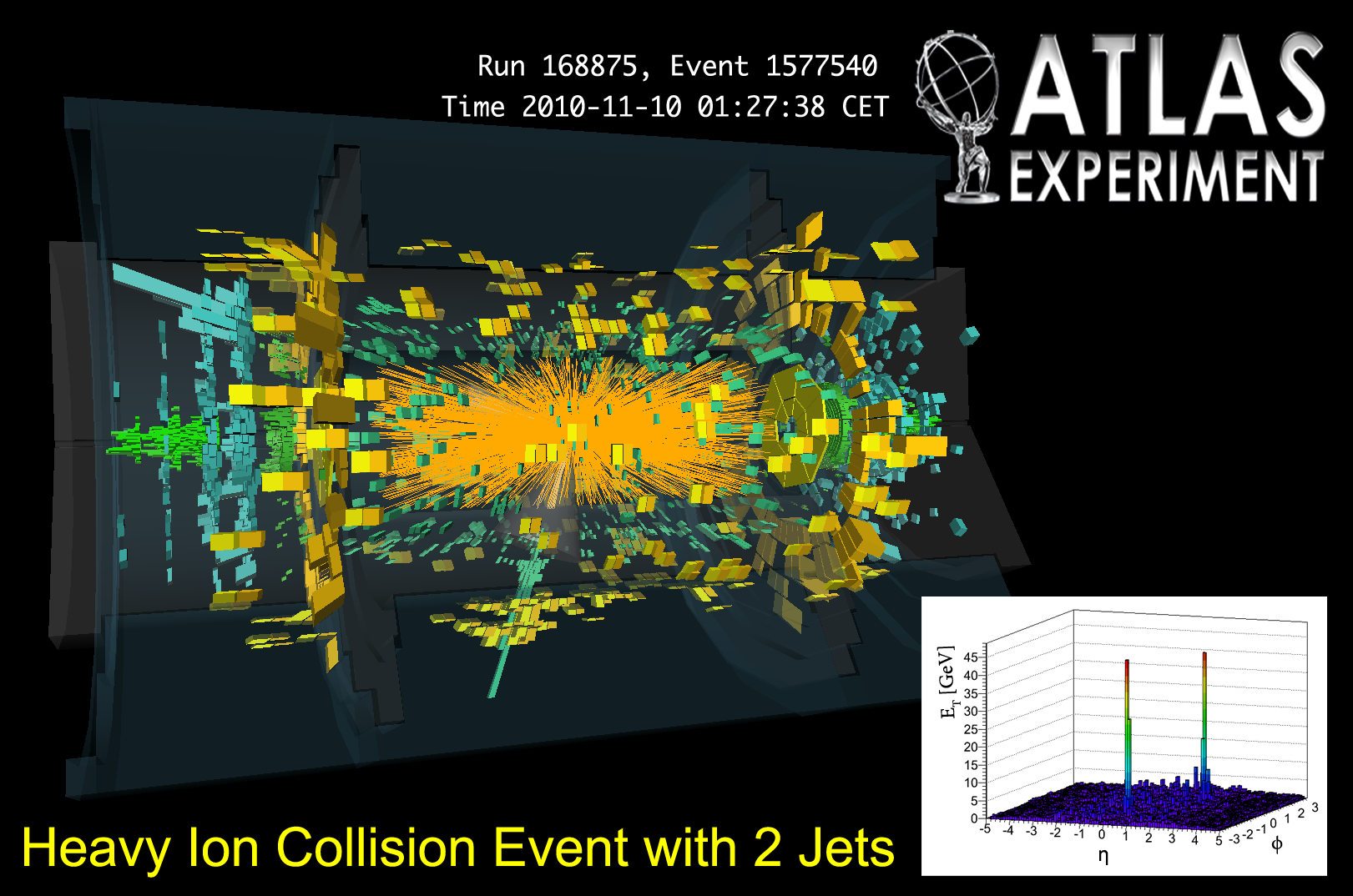
After less than three weeks of colliding lead ions at the highest energies ever achieved, scientists at the LHC laboratory in Geneva, Switzerland, already have brought new insight into the universe as it existed immediately after the Big Bang. Temperatures at the collision point reached trillions of degrees, about the temperature that the lead nuclei would literally melt into a “soup” of its basic building blocks. Indeed, scientists of the ATLAS collaboration are the first ever to observe direct evidence of “jets” of particles as they pass through this hot, primordial soup. Detector technology developed in Canada was critical to this success. The ATLAS paper was accepted by the prestigious journal Physical Review Letters a few hours after submission.
This result highlights the discovery potential of the LHC and the giant ATLAS detector. The accelerator is operating at half energy and a fraction of the design intensity as scientists and engineers are methodically increase its capabilities, yet ground-breaking results are already starting to appear. This direct observation of so-called “jet quenching” may be the strongest evidence yet of formation of a “quark-gluon” plasma, predicted by theorists to have existed about a billionth of a second after the Big Bang. Scientists now have another avenue to study this ultra-exotic form of matter.
Canadian-built detectors called “forward calorimeters” were instrumental to this observation. These particle detectors need to operate in the most intense interactions hot-spots near the LHC collision points, and took years to develop, test and install into ATLAS.
“This breakthrough is a testament to the great success of the Canadian detectors built for ATLAS” said Robert McPherson from the University of Victoria and Institute of Particle Physics, Spokesperson of the ATLAS-Canada collaboration. “The Carleton University and University of Toronto groups who led the forward calorimeter construction effort in Canada are to be particularly congratulated for this great success.”
“The Forward Calorimeter is an innovative detector designed to measure extremely energetic jets of collision products emerging in the direction of the colliding particles” said Robert Orr from the University of Toronto, leader of Toronto calorimeter construction effort. “It was purpose built (as a Canada-US collaboration) to survive in the hostile environment close to the intense LHC beams.”
"Data from the Forward Calorimeters were used to select events for this analysis,” said Gerald Oakham from Carleton University and TRIUMF, leader of the Carleton calorimeter team. “It is gratifying to see that the Canadian built components have been critical to the production of this physics result."
The ATLAS measurement heralds a new era in the use of jets to probe the quark gluon plasma. Future jet quenching and other measurements from the LHC experiments will provide powerful insight into the properties of the primordial plasma and the interactions among its quarks and gluons.
With data taking continuing for one more week, and the LHC already having delivered the programmed amount of data for 2010, the heavy-ion community at the LHC is looking forward to further analysis of their data, which will greatly contribute to the emergence of a more complete model of quark gluon plasma, and consequently the very early Universe.
- Posted by Marcello Pavan
